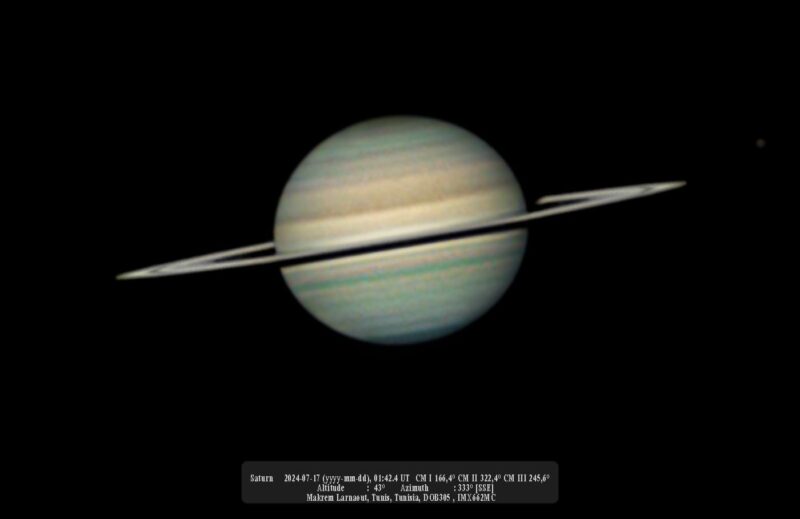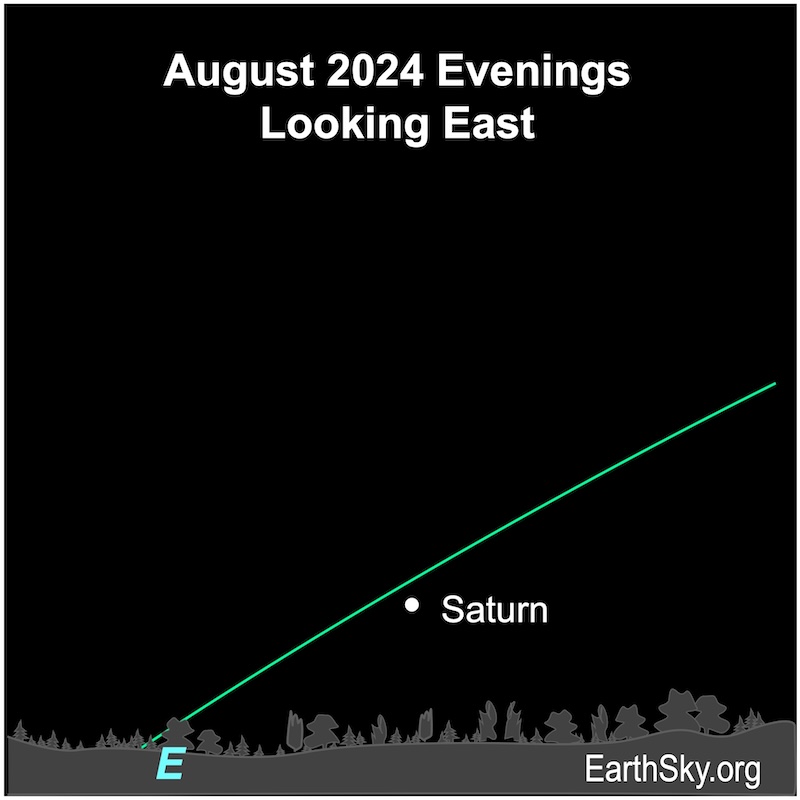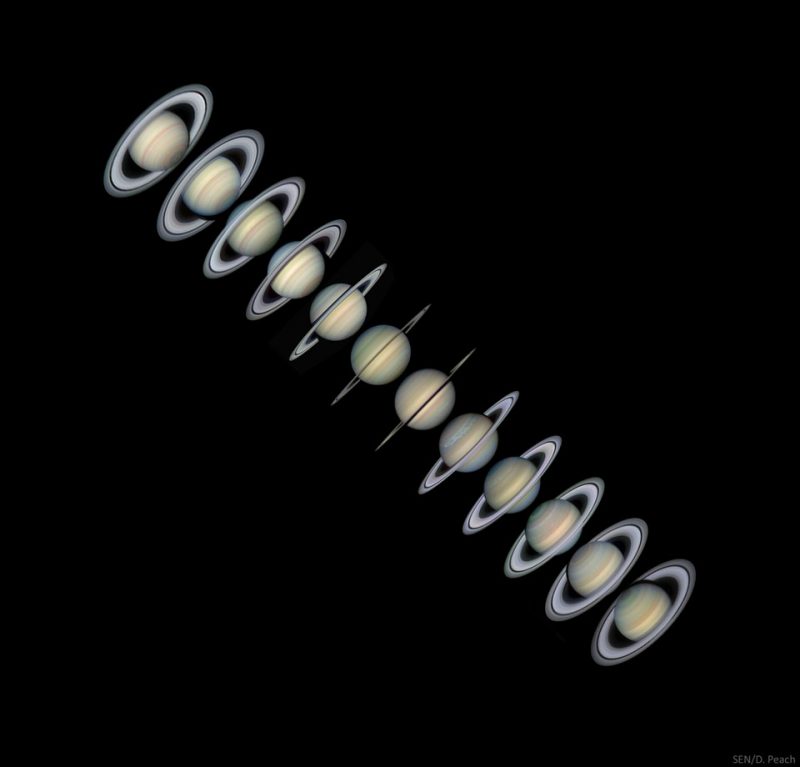Saturn’s rings are disappearing
If you want to see Saturn’s rings through an earthly telescope, do it soon. The ringed planet will appear to lose its famed rings soon! Right now – especially from the viewpoint of astronomers using small telescopes on Earth – Saturn’s rings are appearing thinner and thinner. What’s happening? Of course, Saturn’s rings are the same as we’ve always seen them, if viewed from a vantage point in space. But, as seen from Earth, Saturn’s angle of tilt toward Earth places the rings edge-on from our vantage point approximately every 13 to 15 years. And Saturn’s are remarkably flat. When they’re turned precisely edge-on to us, they’ll seem to disappear! That will happen next around March of 2025.
When the angle between Earth and Saturn causes its rings disappear from our point of view, scientists call this a ring plane crossing.
Saturn’s fragile rings
Saturn is the 2nd-largest planet in our solar system after Jupiter. Saturn measures about 75,000 miles (120,500 km) across. And the giant ring system measures 175,000 miles (282,000 km) across. Yet the rings are shockingly thin. Most of the material making up the rings ranges from dust to house-sized, generally averaging 30 feet (10 m) in thickness.

Start watching now
In August 2024, Saturn can be found in late evening, ascending over the eastern horizon. It’s now in front of the constellation Aquarius the Water Bearer. Saturn is the faintest of the bright planets. But it’s still brighter than most stars. To the eye alone, it appears as a bright, golden star.
Most binoculars won’t show you Saturn’s rings. But with even a very small telescope, you can see the rings. And if you don’t have a telescope, give a heads up to a friend who’s been letting theirs gather dust in the garage. Or visit a local observatory, or nature center. Check out Saturn’s rings now as they’re closing, then keep watching as they appear flatter and flatter as seen from our earthly perspective, and finally entirely disappear.
In 2024, Saturn will reach opposition on September 8. That’s when we will fly between it and the sun, placing the planet opposite the sun in our sky. Throughout northern autumn 2024, Saturn will be in a grand place for viewing.
Is it exciting to see Saturn without its rings? You’d think it would be! Alas. Saturn without rings is a strangely ho-hum sight. Still, it’ll be interesting to watch the rings get thinner, and then rebound again, before and after their March 2025 disappearance.

The March ring plane crossing
The date of the ring plane crossing is March 23, 2025. Unfortunately, Saturn is in conjunction with the sun on March 12. That means Saturn will be passing behind the sun from our perspective. So even though the rings are unlit for 44 days, these days are all around the time that Saturn will appear close to the sun, making it too bright for us to easily view. Between February and May, Saturn is just not in a good position to observe.
However, the rings bobble back to nearly edge-on in November. On November 23, 2025, the rings will be at their narrowest from our point of view. Can you see a thin line on Saturn, or nothing of the rings at all? After that date, the rings will finally start the slow transition to a wide visibility. The rings will reach that view in 2032. At that time, we’ll see Saturn’s south pole most tilted toward Earth.

Galileo and Saturn’s rings
Using his early telescope, Galileo Galilei observed the rings of Saturn for the first time in 1610. Only his telescope wasn’t able to show clearly that these features were rings. He saw them as companions, believing them to be moons. Then, when he turned his telescope toward Saturn again in 1612, he was surprised to find the companions had disappeared! Beguilingly, Galileo eventually saw the companions return. We now know, of course, that what Galileo saw was a ring plane crossing.
Discovering moons during ring plane crossings
Because Saturn is less bright without its rings reflecting sunlight, it’s easier to spot faint objects in its vicinity.
In the late 1600s, Giovanni Cassini discovered four of Saturn’s moons during ring plane crossings. Cassini spotted Iapetus and Rhea during the 1671-1672 ring plane crossings. Then in 1684 he found Dione and Tethys.
William Herschel discovered Mimas during a ring plane crossing in 1789. Other Saturnian moons discovered during ring plane crossings include Hyperion, Epimetheus, Janus, Calypso, Helene and Telesto. The last discovery was from 1980.
Saturn’s rings really are disappearing
The disappearance of Saturn’s rings is only a temporary, visual phenomenon … for now. But one day, Saturn’s rings really will disappear. At least that’s according to researchers who said gravity is pulling the ice particles that make up the rings onto Saturn. The rings are falling as a dusty ring rain. The rings only have about 100 million to 300 million years left. So see them while you can!
Bottom line: Saturn’s rings are disappearing from view. The rings will appear edge-on in March 2025. Because they are so thin, they will virtually disappear from Earth’s sight.
Via Sky Eye
Via High Point Scientific